Whew, what a weekend, I operated in the ARRL June VHF Contest from two locations as WG3K/R and it was a learning experience to be sure. My first operating location was from Cunningham Falls State Park (FM19GP20) and second was from home (FM18rp). I learned a lot and had fun, so lets dive into the event.
Equipment
Transceiver
In the days leading up to the event, I was trying to get an unused-by-me 902MHz DEMI transverter working. I found that the only way it would work, in its configuration, was to use my Yaesu FT-2000; a much bigger transceiver than I was hoping to use. Unfortunately, the transceiver didn’t work correctly and being short on time and test equipment I shelved the idea. I don’t think it would have made much difference, however, as I’ll get to later.
I ended up using my trusty Kenwood TS-2000X for the event. A boat anchor by today’s terms, but I really do love this radio. It has a power output of 100W on 6m and 2m, 50W on 70cm, and 10W on 23cm. There is little to complain about with this device.
Antenna
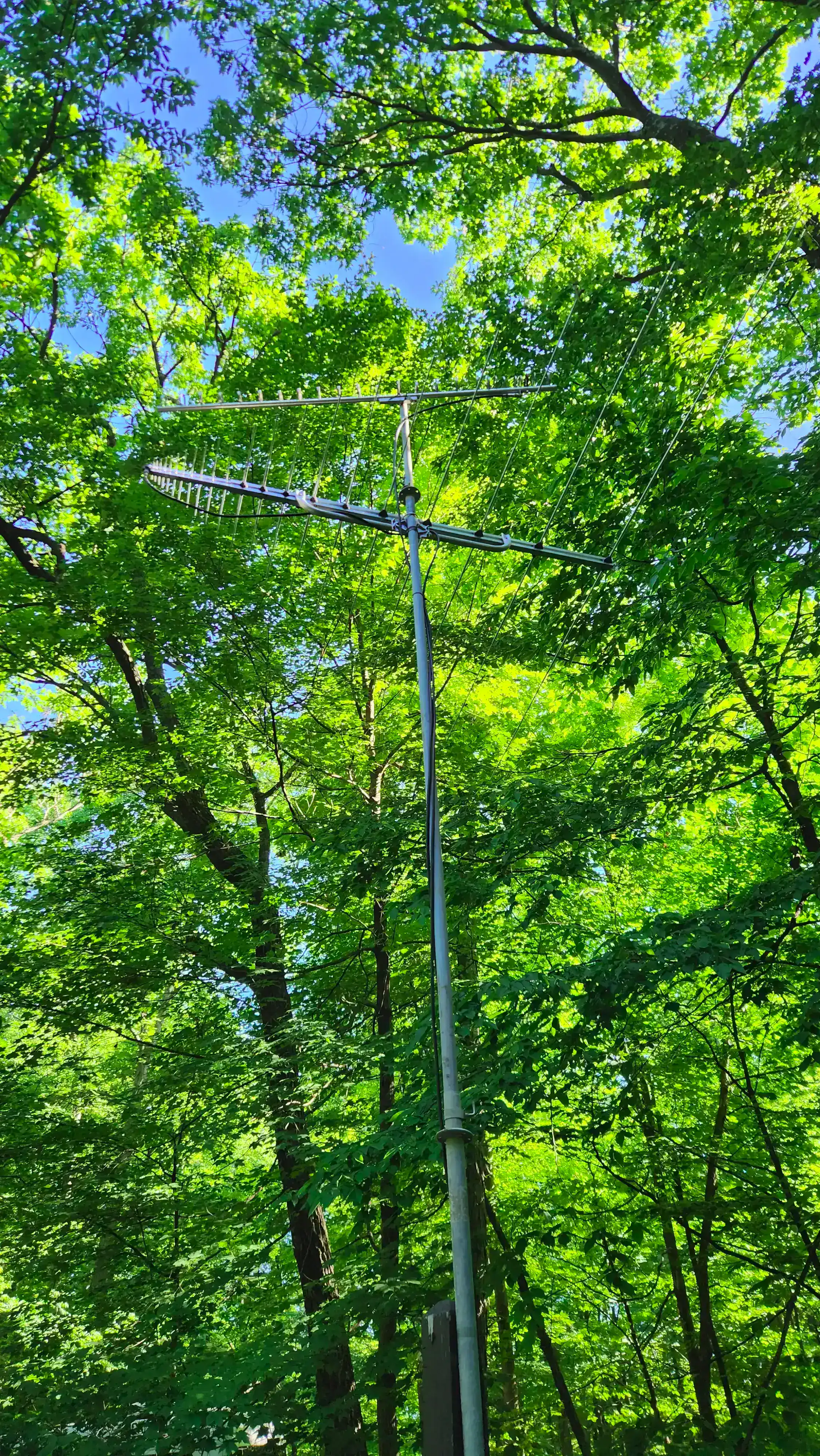 Right before the contest I bought a new antenna to test out for portable operations.
The Create CLP5130-1 is a log periodic antenna that covers 50MHz through 1300MHz (6 meters through 23 centimeters) with ~10 dBi of gain on each band.
With a 2 meter long boom, the antenna is a lot shorter than many yagi antennas and having all the bands on one boom is very nice.
Testing it from the house on a push-up pole, I found that I could easily work stations on 6m and 2m well out to 1931km (1200mi) and beyond.
Right before the contest I bought a new antenna to test out for portable operations.
The Create CLP5130-1 is a log periodic antenna that covers 50MHz through 1300MHz (6 meters through 23 centimeters) with ~10 dBi of gain on each band.
With a 2 meter long boom, the antenna is a lot shorter than many yagi antennas and having all the bands on one boom is very nice.
Testing it from the house on a push-up pole, I found that I could easily work stations on 6m and 2m well out to 1931km (1200mi) and beyond.
Logging Software
I usually use CQRLOG for all my logging needs but I wanted to try something different for rover operations. I settled on KMRover, a Windows-based software that runs fairly well under WINE on Linux. The software helps track what contacts are made from each activated grid. I found a couple bugs, which I’ll try to report back upstream, but overall I like the program.
First location and start of the contest
The family and I ventured up to Cunningham Falls State Park’s William Houck Camping Area in FM19 (POTA US-1566). Elevation is around 500m (1640ft) but the site is completely surrounded by trees (so not a great place for microwaves). While not a summit, I was hoping that the higher elevation would be helpful.
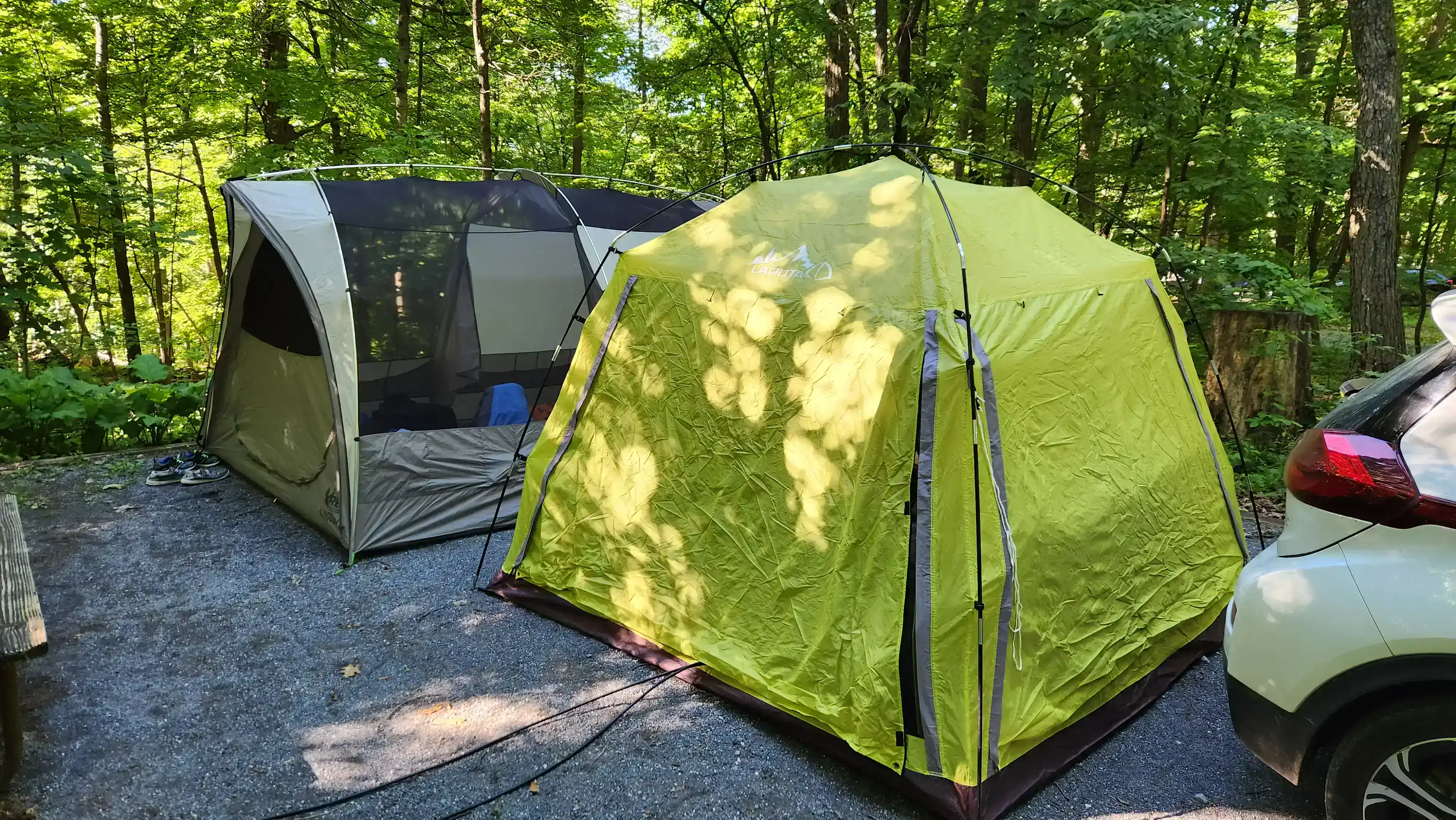 We setup two tents for the short event: one for sleeping and maintaining our personal stuff, and then another for radio operations.
The push-up mast and log periodic antenna were a short distance away making for short feedline runs.
(I actually brought along a 25-element 23cm loop yagi but it didn’t end up working well with the poor feedline and connector adapters in place.)
With a nice folding table and chairs, it was a comfortable operating position.
The cool breeze kept things very pleasant during the entire event.
I managed to make twenty-five (25) contacts prior to the contest starting so I knew everything was working.
At 2PM I was ready.
We setup two tents for the short event: one for sleeping and maintaining our personal stuff, and then another for radio operations.
The push-up mast and log periodic antenna were a short distance away making for short feedline runs.
(I actually brought along a 25-element 23cm loop yagi but it didn’t end up working well with the poor feedline and connector adapters in place.)
With a nice folding table and chairs, it was a comfortable operating position.
The cool breeze kept things very pleasant during the entire event.
I managed to make twenty-five (25) contacts prior to the contest starting so I knew everything was working.
At 2PM I was ready.
At the start of the contest the contacts started flowing. FT8 wasn’t a thing during the last contest I participated in, so I spent time figuring out the best way to incorporate it into my operation. I knew that many people would be there but I was hoping there would still be a lot of people still doing analog where I could run the bands. Unfortunately there weren’t as many. I did run the bands with W3SZ, WS3C, W3IP, K1TEO, and K1RZ. While operating I realized that I had 1.25m on my HT that was sitting on my table. During my run with K1RZ I hooked up the HT to my log periodic antenna and made an FM contact with him. I tried that with a rover later on but came up empty.
And while I was toiling away making contacts where was the rest of my family?
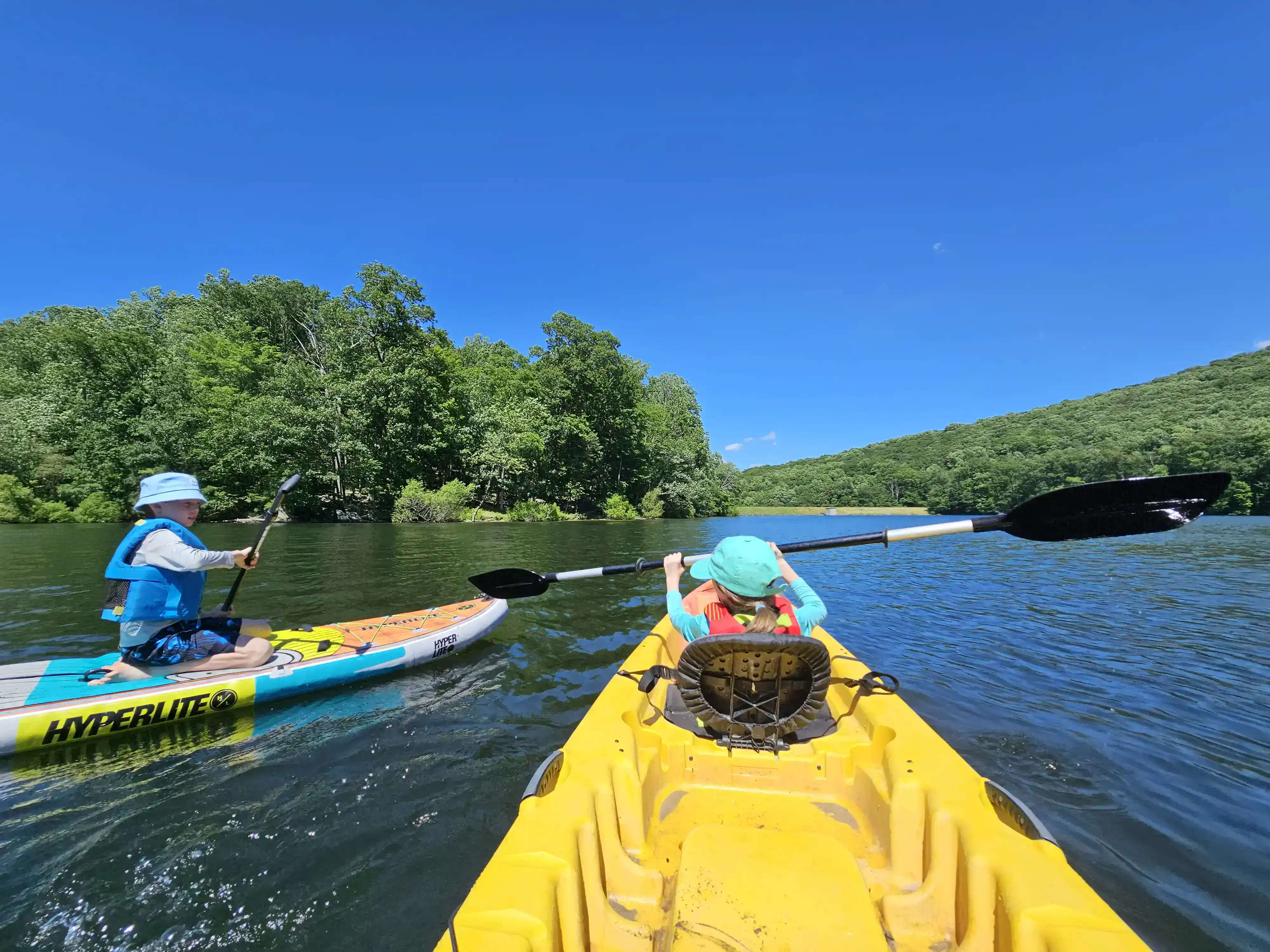
They did come back and made a few contacts later on.
Kids' soccer games precluded much of my operating time on Sunday. We ended up packing up camp about mid-morning and headed to Southern Maryland for our next operating position.
Grids worked
Interestingly, I ended up working mostly New England grids while in FM19. I thought I would be able to work more Midwest grids while at the higher altitude location but I only put EM28 in the log the entire time.
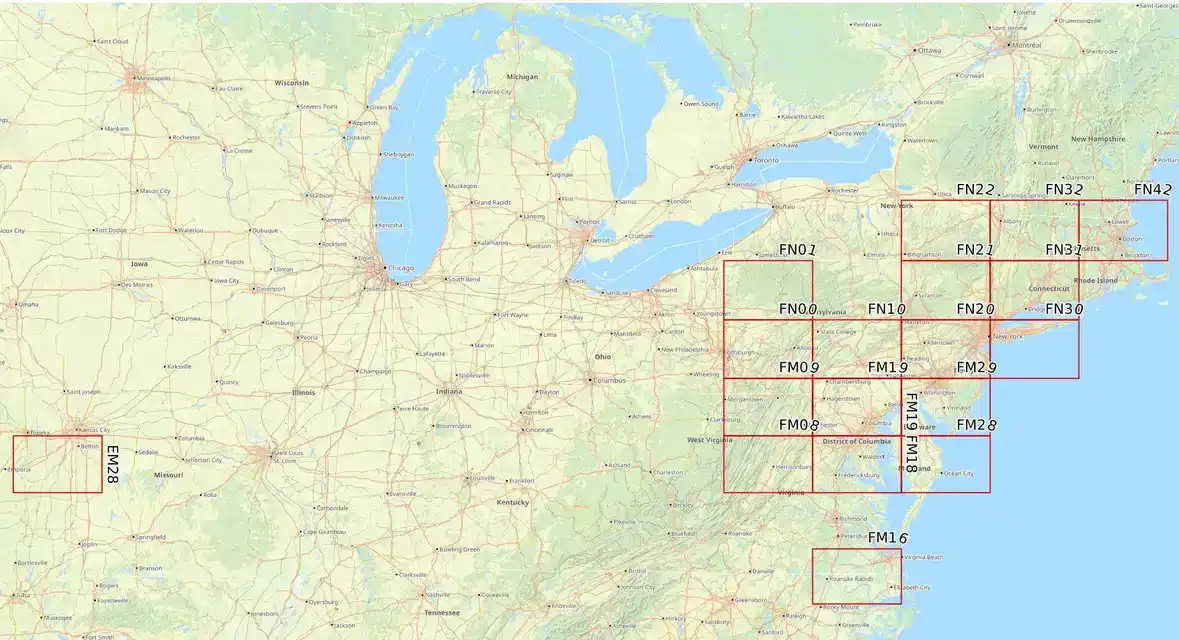
Second location
The second location for operations was to be Ward Farm Park in Dunkirk, Maryland. We arrived to find storm clouds overhead and very breezy conditions. I didn’t want to deal with putting the antenna together and then up only to take it back down in just an hour or two later so I opted to not activate this spot and, instead, to rest for a bit and watch soccer.
Last location
The last location for operation was my house (FM18). It took about thirty minutes to get everything set up but then I was back to operating. Oddly, this location is only ~30m ASL but I was working the Mid-West for the first time during the contest. I added thirty-six (36) contacts to the log (mostly FT8) and tried to run the bands, again, with K1TEO but found the bands to not be in great shape. As the clock neared 11P, the number of new stations for me to work dwindled. The bands all grew silent as the end of the contest came and went.
Grids worked
I set up the antenna at roughly 6m (20ft) above the ground at the house (roughly 30m or 100ft above the Chesapeake Bay). I figured that I wouldn’t have a lot of success getting more grids but I was wrong. From the house I worked many of the same grids as from FM19 but also picked up several EM, DM, and EL grids.

Contest Summary
All in all, I worked 138 contacts (duplicates included).
| Band | QSOs | QSO points | Multipliers |
|---|---|---|---|
50 |
79 |
80 |
26 |
144 |
43 |
44 |
15 |
222 |
1 |
2 |
1 |
432 |
5 |
10 |
3 |
1296 |
1 |
0 |
0 |
Total |
128 |
136 |
45 + 2 = 47 |
Claimed score = 6,392
Grids Worked
During the contest period I worked:
-
26 grids on 6m
-
15 grids on 2m
-
1 grid on 1.25m
-
3 grids on 70cm
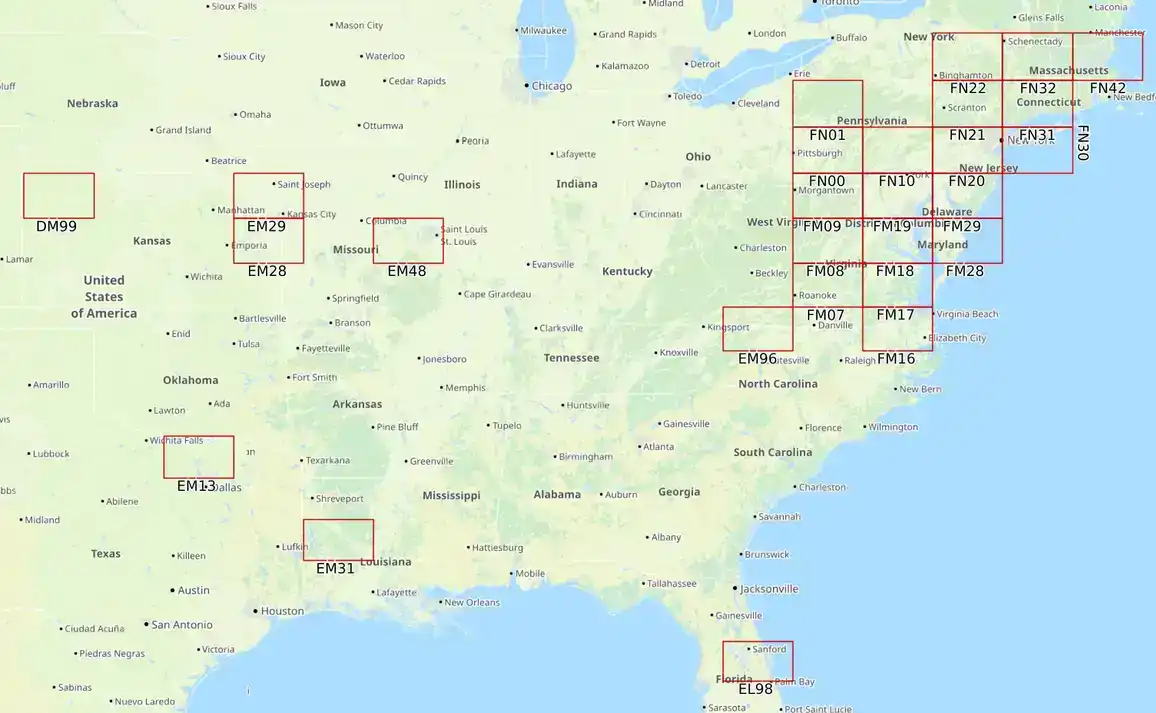
Logs
Logs have been uploaded to Clublog, QRZ, POTA (for our first grid operation), and LoTW.